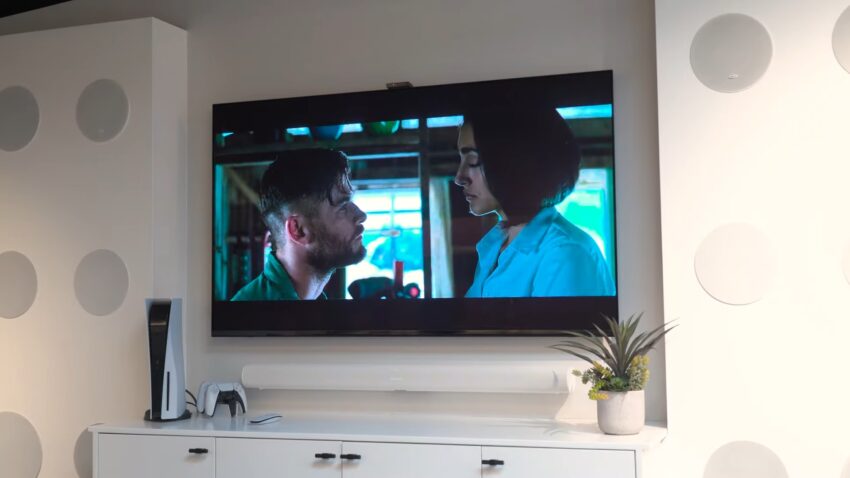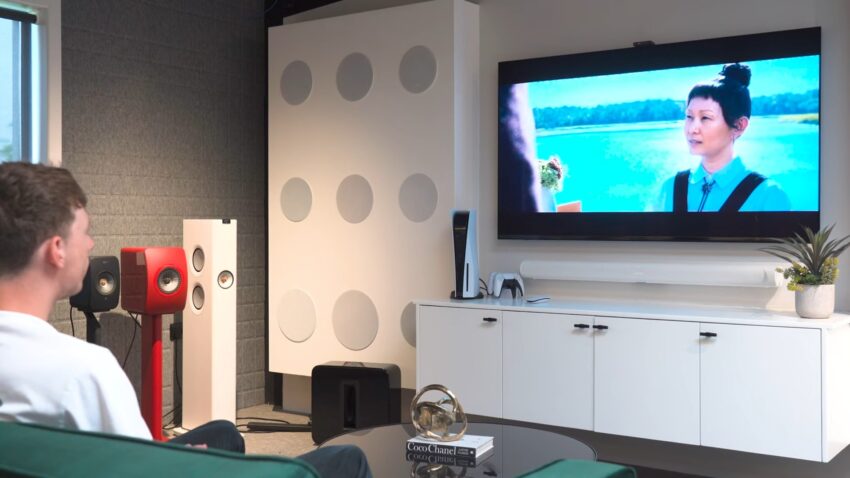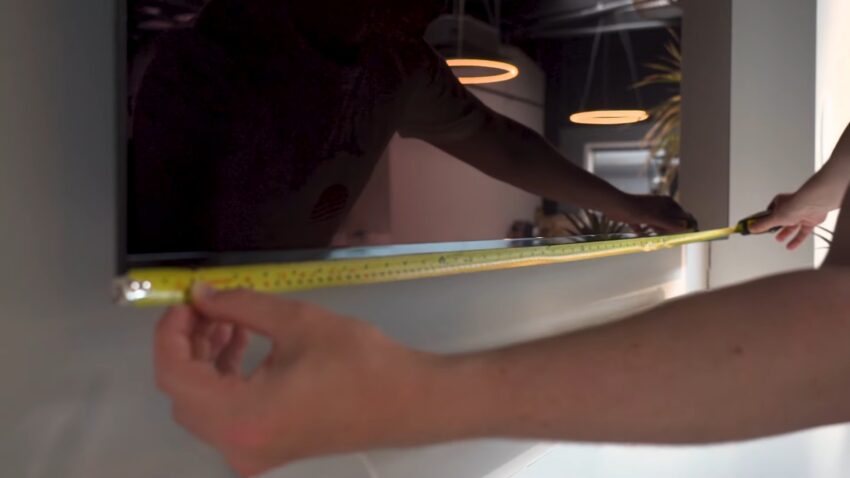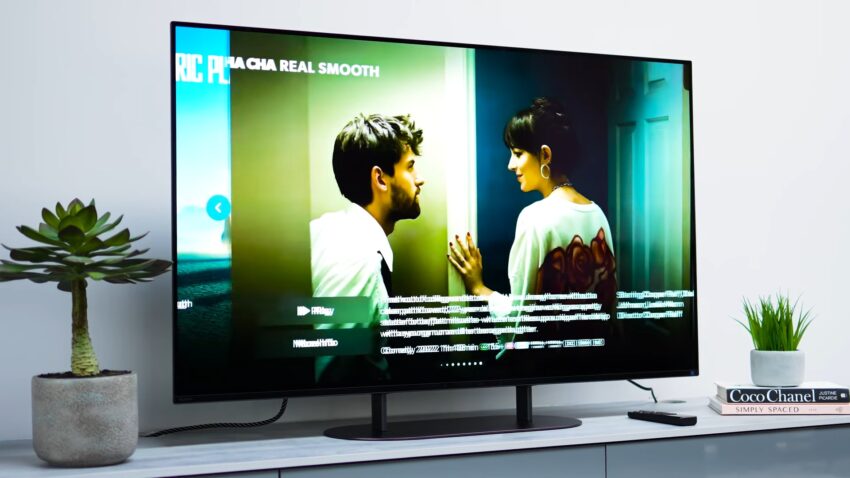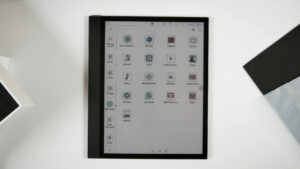From setting up home theaters for friends to advising my family on the best TV sizes for their living rooms, I’ve seen firsthand the impact a screen size can have on one’s viewing experience.
Over the years, I’ve personally owned both 65-inch and 85-inch displays, and I’ve learned a thing or two about the advantages and challenges each size presents. Let’s see if we can find the perfect fit for you.
Aspect Ratio: What is 16×9?
The term “16×9” refers to the aspect ratio of the screen. In simpler terms, it’s the ratio of the width to the height of the display. This ratio ensures that the screen is wider than it is tall, making it ideal for watching movies and TV shows.
The 16×9 aspect ratio has become the standard for most modern televisions and monitors, offering a balanced and immersive viewing experience.
Measuring Screen Size
When we talk about a 65-inch or 85-inch display, we’re referring to the diagonal measurement of the screen. This measurement starts from one corner and extends to the opposite corner.
It’s essential to note that while the diagonal size increases, so does the overall width and height, impacting the space needed for installation and the viewing distance.
Visual Experience and Immersion
One of the most significant factors in choosing a screen size is the kind of visual experience you’re aiming for. Both 65-inch and 85-inch displays offer unique viewing experiences, but there are some differences to consider.
The 65-inch Experience
A 65-inch display offers a balanced viewing experience for most living rooms. It’s large enough to provide an immersive experience for movies and gaming without overwhelming the space.
For those with smaller living areas or who sit closer to the screen, a 65-inch display can be the sweet spot, offering clear visuals without the need to move your head constantly.
The 85-inch Experience
Stepping up to an 85-inch display takes immersion to a whole new level. This size is perfect for dedicated home theaters or larger living spaces. The increased screen real estate means that details are more prominent, and the overall experience is more cinematic.
However, it’s essential to ensure that you have enough distance between the screen and the seating area to appreciate the larger size fully.
Space Considerations and Installation
While the allure of a massive screen is tempting, it’s essential to consider the practical aspects of installation and the space available in your home.
A 65-inch display is versatile and can fit comfortably in most living rooms, bedrooms, or even a dedicated media room. While it’s larger than the average TV, it doesn’t require a vast amount of wall space. However, it’s crucial to ensure that the wall can support the weight of the TV, especially if you’re wall-mounting.
An 85-inch display requires a considerable amount of space. It’s best suited for larger rooms or dedicated home theaters. The wall space needed is significantly more, and you’ll also need to ensure that the wall can bear the weight of the larger display.
Additionally, the viewing distance becomes even more critical with this size to ensure that viewers can see the entire screen comfortably.
Cost Implications
While the allure of a larger screen is undeniable, it’s essential to consider the financial implications of your choice. Both sizes come with their own set of costs, not just in terms of the initial purchase but also in terms of maintenance and associated equipment.
Price Point of a 65-inch Display
Generally, a 65-inch display is more affordable than its 85-inch counterpart. It’s a popular size, meaning there’s a lot of competition among manufacturers, which can drive prices down. This size also requires less material to produce, leading to a lower cost.
For those on a budget but still wanting a large-screen experience, the 65-inch display offers a good balance between size and cost.
Investment in an 85-inch Display
An 85-inch display is undeniably a significant investment. The sheer size and the technology required to produce clear, sharp images on such a large screen mean that these displays often come with a heftier price tag.
However, for those who prioritize a cinematic experience and have a larger budget, the investment can be well worth it.
Technological Features and Enhancements
With larger screens, the demand for better technology and enhanced features becomes paramount. Both sizes offer a range of technological advancements, but there are some differences to note.
| Aspect | 65-Inch Displays | 85-Inch Displays |
|---|---|---|
| Resolution | 4K | Often 8K |
| HDR Support | Yes | Yes |
| Smart Features | Yes | Yes |
| Color Accuracy | Enhanced for vibrant visuals | Ensured for clarity and sharpness |
| Contrast Ratios | Enhanced for better contrast | Often with local dimming for deep blacks |
| Refresh Rates | Smooth viewing experience | Advanced technology for smooth performance |
| Advanced Technologies | Latest technology including 4K resolution | Quantum dot and OLED technology often used |
Impact on Room Aesthetics
Beyond the practical and technological considerations, it’s essential to think about how your chosen screen size will impact the overall aesthetics of your room.
The 65-inch: This particular type can seamlessly integrate into most room designs. It’s large enough to be the focal point of a living area but not so large that it dominates the space. With slim bezels and sleek designs, these displays can enhance the modern aesthetic of a room without overwhelming it.
The 85-inch: This type of display makes a statement. It becomes the centerpiece of any room it’s in, demanding attention and often dictating the room’s layout and design. While it offers an unparalleled viewing experience, it’s essential to ensure that the room’s aesthetics can accommodate such a large piece of technology without feeling cluttered or imbalanced.
Viewing Distance and Sound Experience
| Aspect | 65-Inch Displays | 85-Inch Displays |
|---|---|---|
| Optimal Viewing Distance | 8 to 10 feet | 10 to 12 feet |
| Viewing Experience | Appreciate details without straining | Comfortable viewing of the entire screen |
| Sound Experience | Decent built-in speakers; consider a soundbar | More substantial built-in speakers; consider surround sound |
Longevity and Future-Proofing
Investing in a large display is a significant decision, and considering the longevity and future-proofing aspects is crucial.
- Most 65-inch displays are built to last, with manufacturers offering warranties and guarantees for several years. Given the popularity of this size, it’s also easier to find replacement parts or get repairs done. In terms of technology, a high-end 65-inch display purchased today should remain relevant for many years, especially if it supports 4K and smart features.
- An 85-inch display is often seen as a long-term investment. These screens come with the latest technology, ensuring they remain relevant for a longer time. Features like 8K support, advanced HDR, and smart capabilities mean that these displays are future-proofed for upcoming advancements in content and broadcasting.
FAQs
Can I use either display size for gaming?
Absolutely! Both 65-inch and 85-inch displays can be used for gaming. However, the choice depends on the gaming setup and personal preference.
Some gamers prefer the larger 85-inch screen for a more immersive experience, especially for open-world games, while others find the 65-inch size more than adequate for most gaming scenarios.
How do the two sizes compare in terms of energy consumption?
Generally, larger screens like the 85-inch display will consume more power than smaller ones like the 65-inch due to the larger backlighting or pixel requirements. However, the exact energy consumption can vary based on the display technology, brand, and model.
It’s always a good idea to check the energy rating and consumption details provided by the manufacturer.
Are there any specific room lighting considerations for these display sizes?
Both display sizes benefit from controlled lighting to reduce glare and reflections. However, with larger screens like the 85-inch, any ambient light reflections can be more noticeable due to the expansive screen area.
It’s recommended to position the display away from direct sunlight or bright light sources and consider using blackout curtains or dimmable lights for the best viewing experience.
How do the two sizes fare in terms of portability and relocation?
A 65-inch display is generally easier to move and relocate than an 85-inch one due to its smaller size and weight. If you anticipate needing to move your display frequently or live in a rental property where you might shift often, the 65-inch might be more convenient.
The 85-inch display, given its size and weight, often requires more than one person to move safely.
Are there any specific brands that specialize in one size over the other?
Most leading television and display brands offer both sizes in their product lineup. However, some high-end brands might release their latest technologies and features first in their larger displays, like the 85-inch, before rolling them out to smaller sizes.
It’s always a good idea to research and compare models from various brands before making a decision.
How do the two sizes compare in terms of resale value?
Both sizes retain value relatively well, especially if they’re from reputable brands and have been well-maintained. However, the 85-inch displays, given their initial higher cost and often more advanced features, might have a slightly higher resale value in absolute terms.
That said, the percentage depreciation might be similar for both sizes over time.
The Bottom Line
Having spent countless hours in front of both 65-inch and 85-inch displays, I can confidently say that there’s no one-size-fits-all answer. It truly boils down to your personal preferences, space considerations, and budget.
Both sizes have their merits, and I’ve had fantastic experiences with each. Remember, it’s not just about the size but also about the quality of the content, the technology behind the screen, and the environment in which you’re watching.
Whatever you choose, make sure it enhances your viewing experience and brings joy to your entertainment moments.


